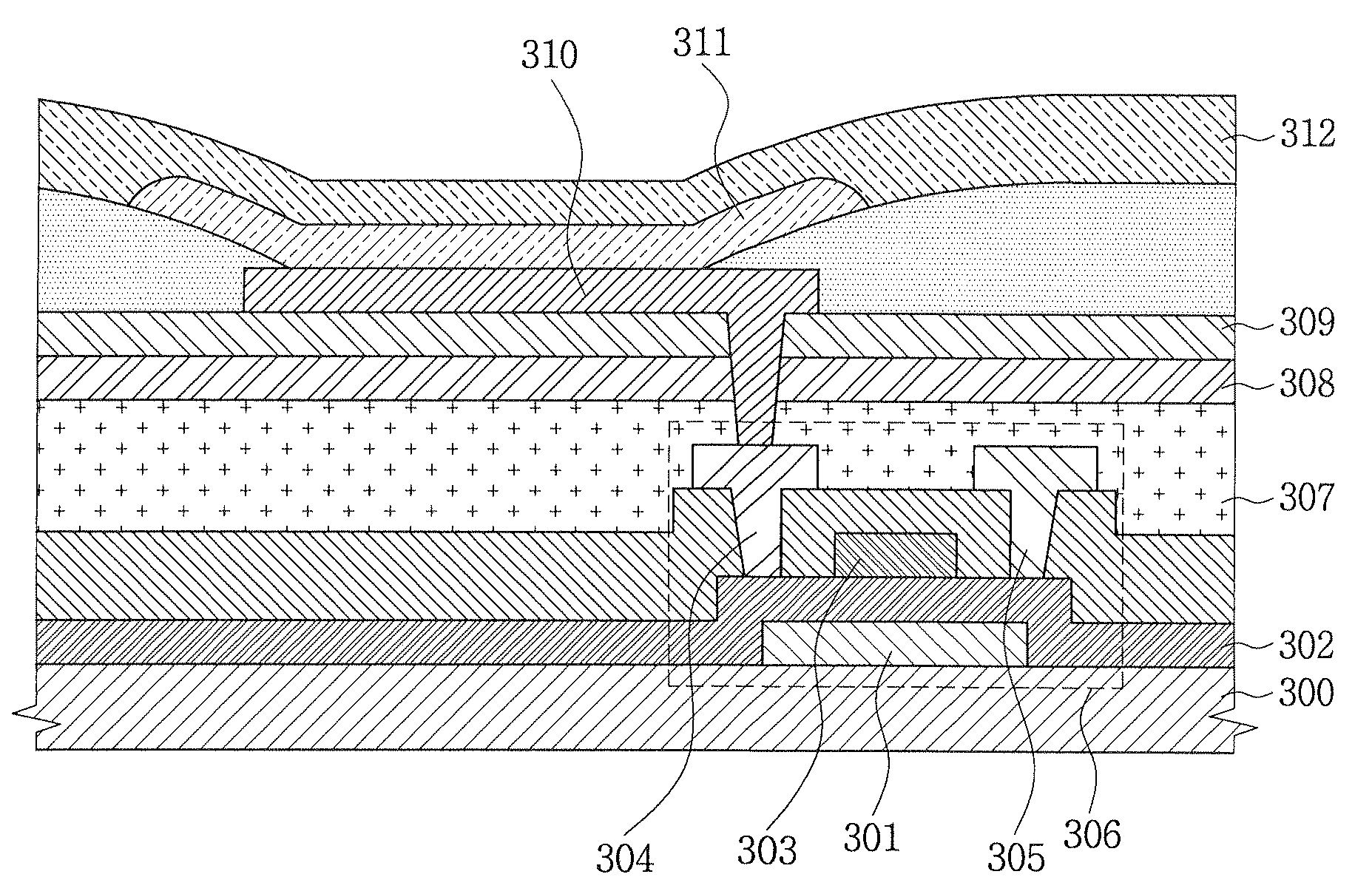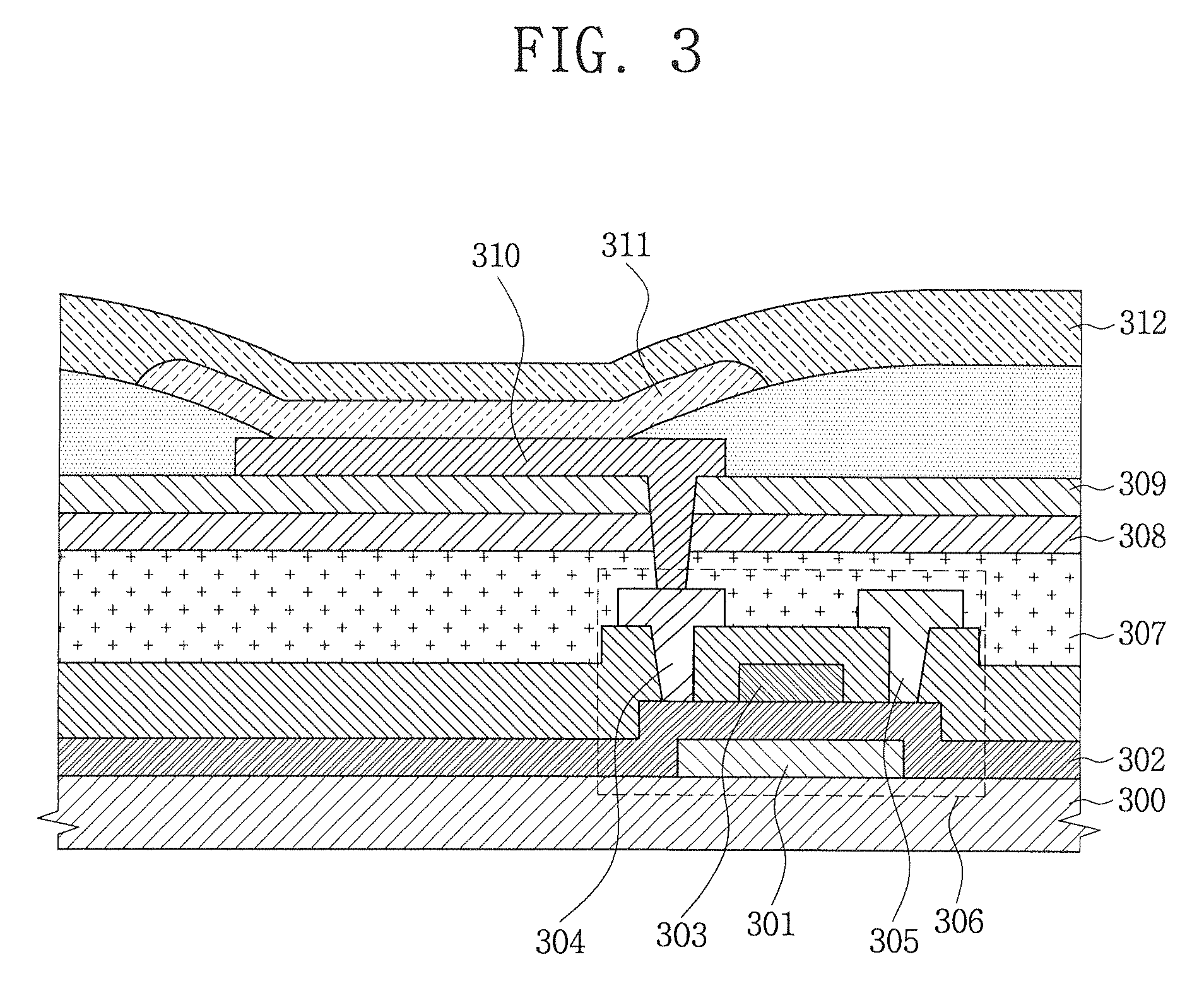Organic light emitting diode display device
a light-emitting diode and display device technology, applied in the direction of organic semiconductor devices, discharge tube luminescnet screens, test/measurement of semiconductor/solid-state devices, etc., can solve the problems of complex process for fabricating oled display devices, difficult to form projecting lenses for collecting light on the substrate, etc., to enhance light extraction efficiency and color reproducibility, improve brightness and color coordinate characteristics, simple structure and process
- Summary
- Abstract
- Description
- Claims
- Application Information
AI Technical Summary
Benefits of technology
Problems solved by technology
Method used
Image
Examples
experimental examples 1 to 4
[0056]Sample OLED display devices were fabricated. Second refraction layers (Nb2O5, refractive index: 2.4) were formed to thicknesses listed in Table 1 on respective glass substrates. A first refraction layer (SiO2, refractive index: 1.45) was formed to a thickness of 30 nm on the second refraction layer. A first electrode, which was made of ITO, was formed to a thickness of 50 nm on the first refraction layer. A hole injection layer was formed to a thickness of 75 nm using DNTPD on the first electrode, and a hole transport layer was formed to a thickness of 15 nm using NPB on the hole injection layer. A blue emission layer was formed to a thickness of 25 nm using AND as a host and EK8 (Kodak) as a dopant on the hole transport layer. Subsequently, an electron transport layer was formed to a thickness of 25 nm using Alq3 on the blue emission layer, and an electron injection layer was formed to a thickness of 5 nm using LiF on the electron transport layer. A second electrode was forme...
experimental examples 5 to 8
[0057]Except that a first refraction layer was formed to a thickness of 90 nm, other sample OLED display devices were fabricated with the same conditions as in Experimental examples 1 to 4.
experimental examples 9 to 20
[0062]Second refraction layers (Nb2O5, refractive index: 2.4) were formed to thicknesses listed in Table 5 on respective glass substrates. A first refraction layer (SiO2, refractive index: 1.45) was formed to a thickness of 30 nm on the second refraction layer. The first electrode was formed to a thickness of 50 nm using ITO on the first refraction layer. Hole injection layers were formed to thicknesses of 145, 100 and 75 nm for red, green and blue pixels using DNTPD on the first electrode, respectively. A hole transport layer was formed to a thickness of 15 nm using NPB on the hole injection layers. A red emission layer was formed to a thickness of 45 nm using rubrene as a host and RD3 (Kodak) as a dopant, a green emission layer was formed to a thickness of 45 nm using Alq3 as a host and C545T as a dopant, and a blue emission layer was formed to a thickness of 25 nm using AND as a host and EK8 (Kodak) as a dopant on the hole transport layer. Subsequently, an electron transport laye...
PUM
 Login to View More
Login to View More Abstract
Description
Claims
Application Information
 Login to View More
Login to View More - R&D
- Intellectual Property
- Life Sciences
- Materials
- Tech Scout
- Unparalleled Data Quality
- Higher Quality Content
- 60% Fewer Hallucinations
Browse by: Latest US Patents, China's latest patents, Technical Efficacy Thesaurus, Application Domain, Technology Topic, Popular Technical Reports.
© 2025 PatSnap. All rights reserved.Legal|Privacy policy|Modern Slavery Act Transparency Statement|Sitemap|About US| Contact US: help@patsnap.com



